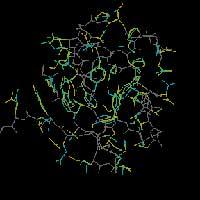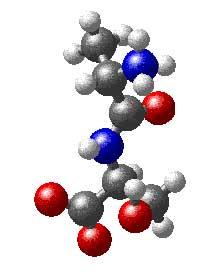Twenty-two amino acids
American scientists discover a bacterium that uses pyrolysin amino acid to make proteins.

Although they lack much research, in general biochemists believe that they know all the basic blocks of life, that is, all types of substances involved in the process are known. Now, researchers find that a bacterium uses an unconventional amino acid. Amino acid is the raw material for the production of proteins and according to classical biochemistry there are 20 different. The proper combination of some of them constitutes a certain protein, and a different combination form of forming a protein. These proteins are the ones that perform all the chemical processes of the body: they are for everything.
The fact that workers are for everything is the responsibility of all kinds of chemical reactions. The variability resides in these 20 amino acids. All the chemistry that needs nature is summarized in these 20 blocks, a combination of which can perform any process that is necessary. But in 1986 scientists discovered a twenty-first and have now known the twenty-second. They are called selenocysteine and pyrolysine, respectively.
Perhaps nature does not have everything under control, so it sometimes tests new basic blocks. But this trend is more common than we think. For example, selenocysteine has been found in many beings, both in some bacteria and in some mammals. However, pyrolysine does not appear to be very widespread.

But, despite its abundance or scarcity, the use of a new amino acid means for it a genetic code. For cells to know when and where the pyrolysin should be, the signal indicating it is essential, that is, it needs a codon. This has also been discovered by the team led by biochemist Michael Chan. It has been proposed that this elbow was a stop sign that 'learns' to consider cells as a code of pyrolysine. Is it a curiosity of the bacteria or is it more common than we believe?
From time to time it brings us the bases of biochemistry. It is surprising that we already know the 22 amino acids that appear in the structure of proteins and their coding signals. This can mean that the twenty of them are not always enough to make complete chemistry. And although we propose one more step, when is the twenty-third amino acid?
Buletina
Bidali zure helbide elektronikoa eta jaso asteroko buletina zure sarrera-ontzian











